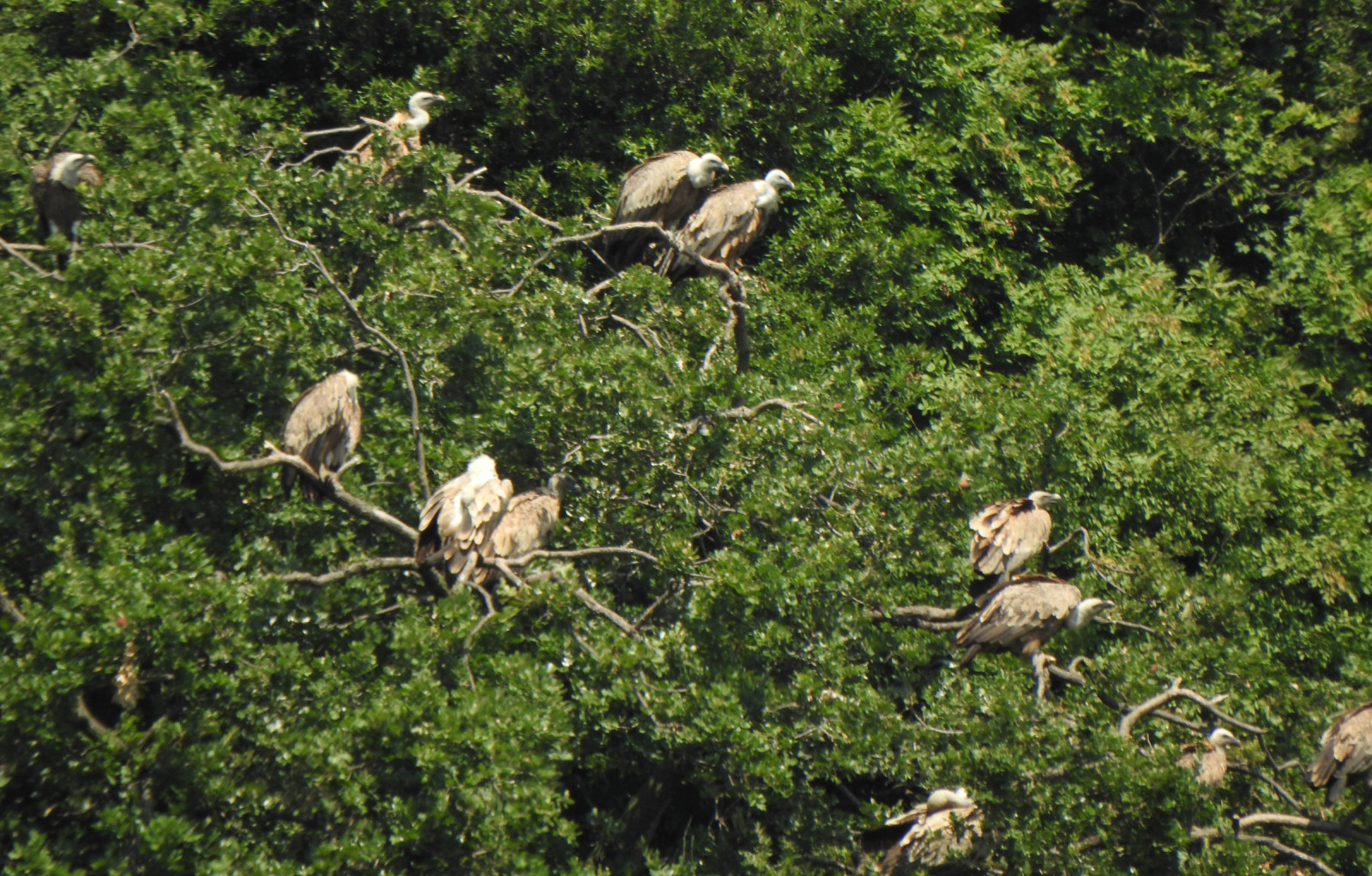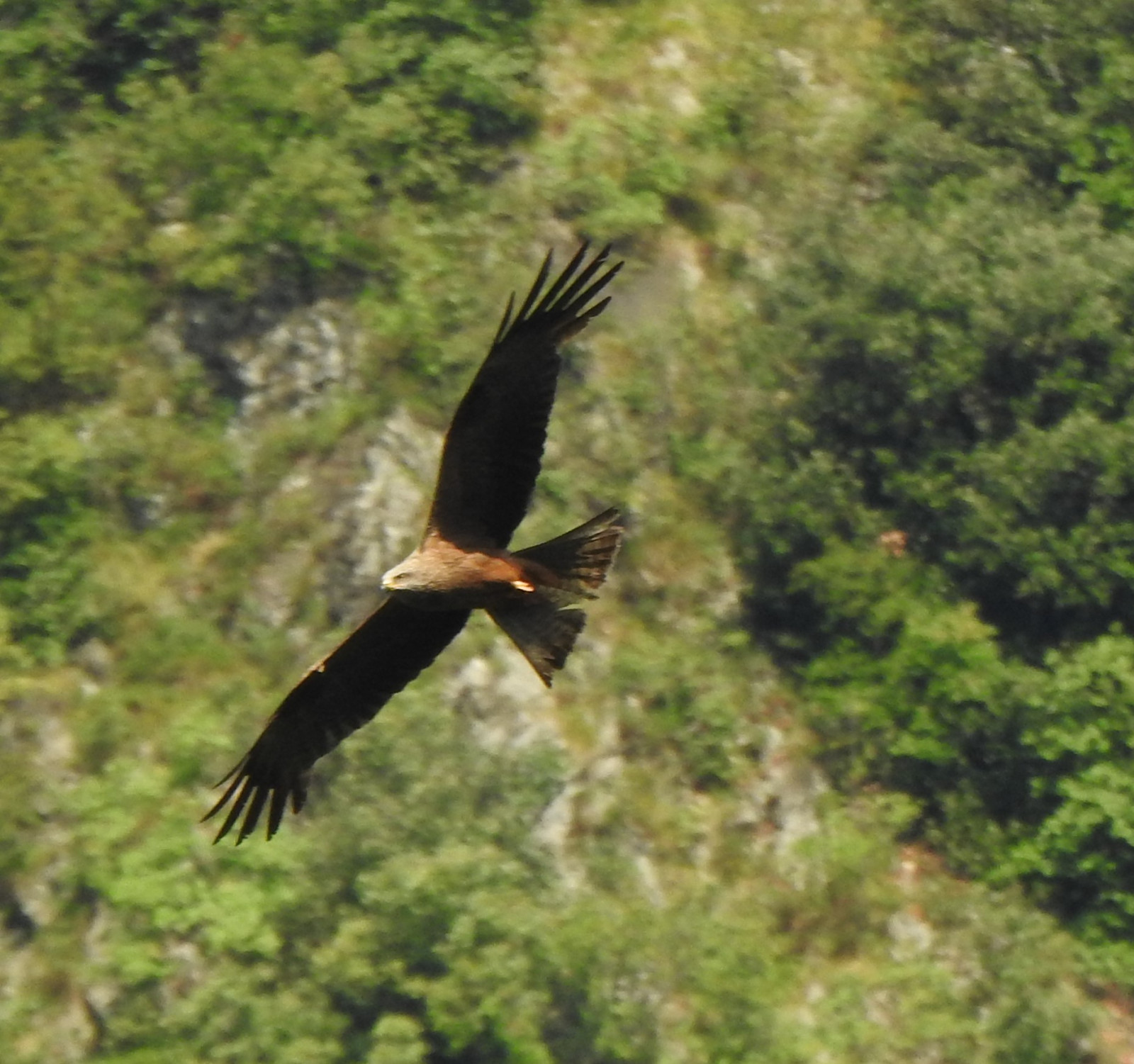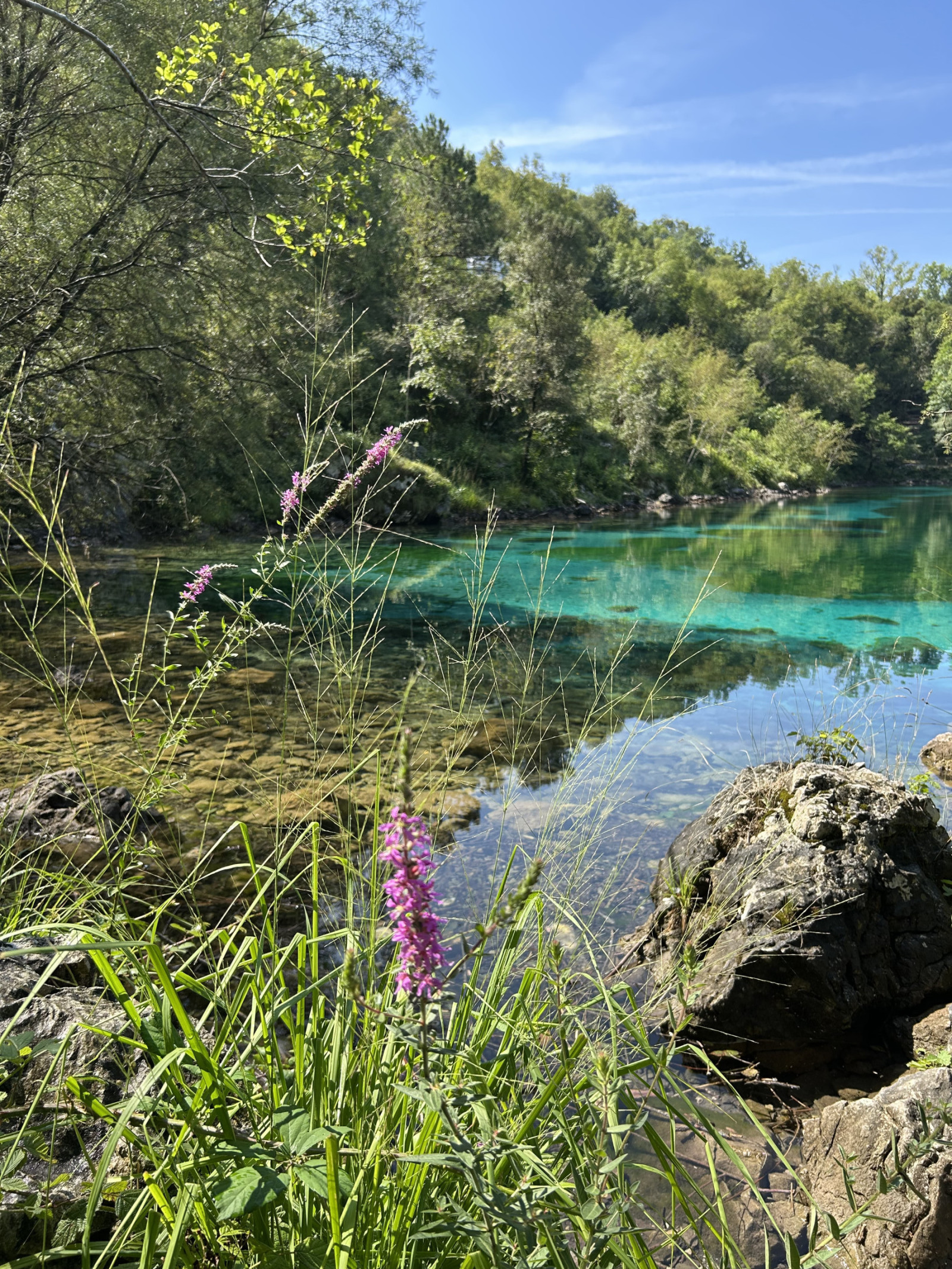Beschreibung
The Lago di Cornino reserve is named after Lake Cornino, a small lake of clear deep blue water, and borders the mighty Tagliamento River, the last “free” river in Europe. It was established in 1996 but the project of re-introducing Gänsegeier to the region dates back to the 1980s. At that time about 75 vultures were released and a feeding point was created. According to the reserve’s website, the colony currently has about 150 griffons in winter and over 200 in spring and summer, when individuals arrive from other Mediterranean countries, and about 30 pairs nest along the central section of the valley of the River Tagliamento. Other large birds that can be observed circling above the sheer rock walls or around the feeding station include Schmutzgeier, Mönchsgeier, Steinadler, Rotmilan and Schwarzmilan.
During spring and autumn migration one may also spot several less common birds of prey such as Schlangenadler , Wespenbussard , Fischadler, Kornweihe, Rohrweihe, Wiesenweihe and Rotfußfalke.
Other species commonly observed around the visitor centre and the lake include Mönchsgrasmücke , Nachtigall , Eichelhäher , Zippammer and Berglaubsänger. Uhu, Waldkauz and Steinkauz also inhabit the area.
Details
Zugang
Lago di Cornino is located 30 km north of Udine, near the village of Sompcornino. Best accessible by car. There is a small car park at the visitor centre. Press P on the map for directions to the car park.
Terrain und Habitat
Wald , Berg , SeeBedingungen
GebirgigRundweg
NeinIst ein Spektiv nützlich?
Möglicherweise hilfreichGute Beobachtungszeit
GanzjährigBeste Beobachtungszeit
Frühjahrszug , Sommer , Frühjahr , HerbstzugRoute
Schmaler PfadSchwierigkeitsgrad der Tour
DurchschnittlichErreichbarkeit
zu FußBeobachtungshütten oder -türme
JaZusätzliche Informationen
The best view of the feeding station is from within the visitor centre and therefore only accessible at opening hours. There is also a small exhibition about the geography of the region and its fauna and flora at the visitor centre. A few captive birds are exhibited here, e.g. specimen of griffon vulture that could not be released.




